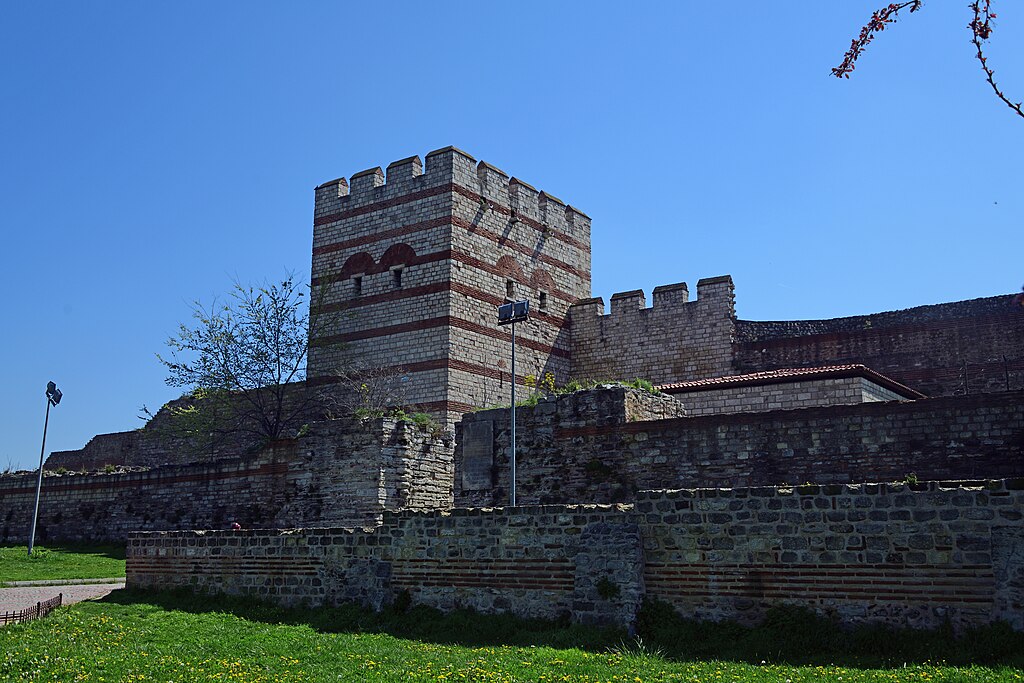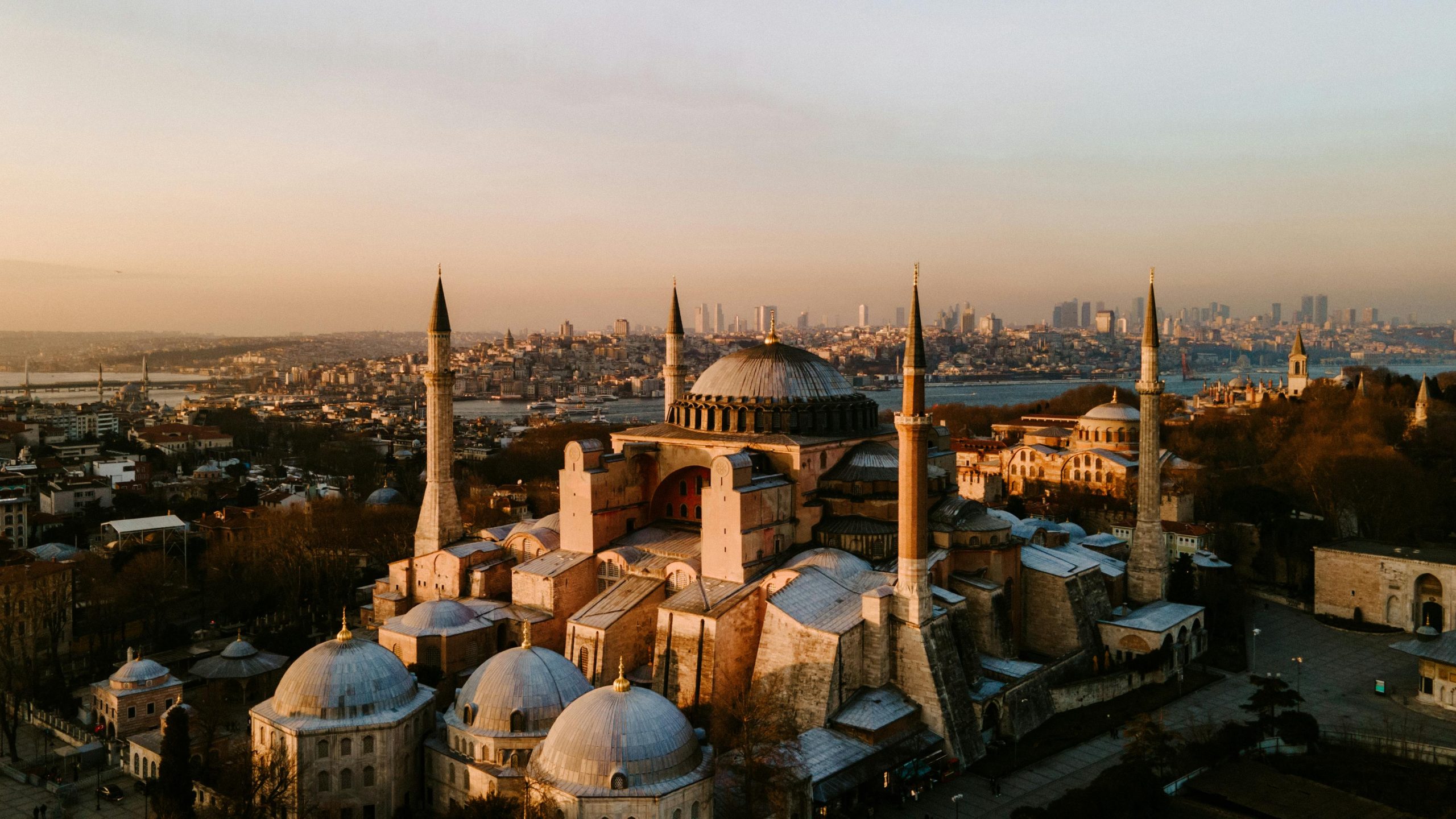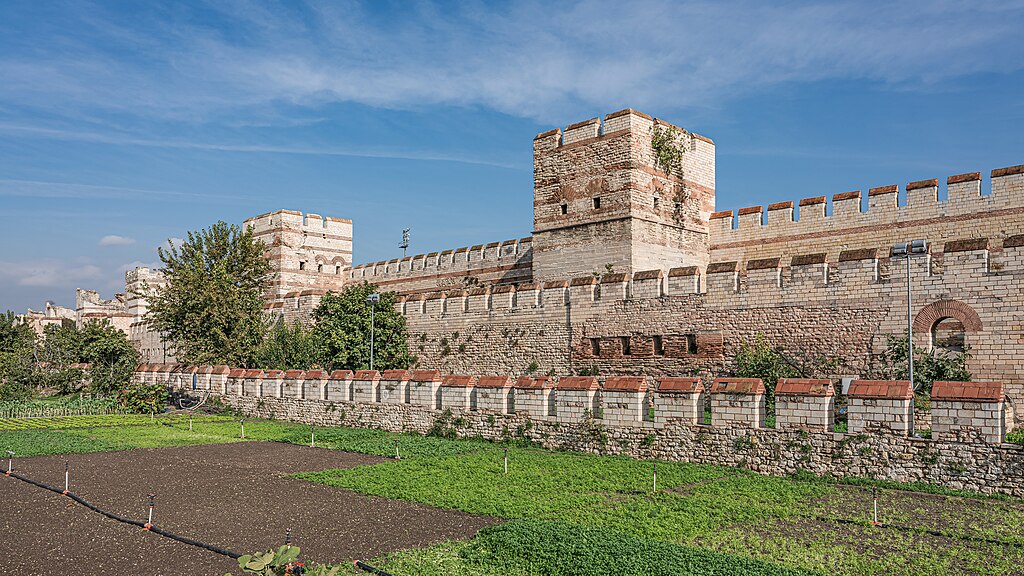Gate of Saint Romanus, Istanbul
City Gate in Istanbul

The Gate of Saint Romanus — known in Greek as Porta Agiou Rōmanou and today as Topkapı, or “Cannon Gate” — stands as one of the most legendary points along Istanbul's ancient Theodosian Walls. This gate was the heart of the action during the final siege of Constantinople in 1453, when Emperor Constantine XI Palaiologos made his last stand against the advancing Ottoman army of Sultan Mehmed II. The immense cannon known as the “Basilic,” designed by Hungarian engineer Urban, was placed here, giving the modern Turkish name Topkapı, literally “Cannon Gate.” For history enthusiasts, this site is one of the must-see places in Istanbul — the ground zero of one of world history's most defining battles.
Situated near the crest of Istanbul's Seventh Hill, the Gate of Saint Romanus occupies one of the highest and most strategic points along the city's land walls. Though little of its Byzantine gatehouse survives today, its name and legacy endure as symbols of both heroic resistance and the dawn of a new era. It remains a great place to visit on a walking tour of Istanbul's Theodosian Walls, where the echoes of empire still linger.
Table of Contents
History and Significance of the Gate of Saint Romanus (Topkapı)
The Gate of Saint Romanus was named after a nearby church dedicated to Saint Romanos, reflecting Constantinople's tradition of tying its defensive gates to local places of worship. Constructed in the early 5th century as part of Emperor Theodosius II's expansion of the city's fortifications, it became one of the principal gates along the middle section of the Theodosian Walls. Its position, commanding the highest ground in the area, made it both a key defensive stronghold and a target during sieges.
During the fateful siege of 1453, this gate became the focal point of the final battle for Byzantium. Emperor Constantine XI established his headquarters nearby, coordinating the city's defenses against overwhelming Ottoman forces. On the morning of May 29, 1453, the massive “Basilic” cannon, positioned by the Ottomans opposite the gate, breached the outer walls after weeks of relentless bombardment. As the walls collapsed and soldiers poured through, Constantine fought to the end before falling in battle, his body never definitively identified. The capture of the Gate of Saint Romanus symbolized the fall of Constantinople and the rise of the Ottoman Empire.
After the conquest, the gate was renamed Topkapı (“Cannon Gate”), commemorating the pivotal weapon that had decided the siege. The surrounding district also took on the same name, ensuring that this moment of transformation would be forever etched into Istanbul's geography.
Things to See and Do at the Gate of Saint Romanus (Topkapı)
Visitors to the Gate of Saint Romanus can explore a powerful site of historical memory. While much of the gate's original Byzantine superstructure has vanished, sections of the Theodosian Walls here remain impressive, revealing the scale of the city's medieval defenses. The terrain itself tells the story — descending from the summit of the Seventh Hill into the Lycus Valley, where the fiercest fighting once took place.
Nearby plaques and information signs recount the story of the 1453 siege, and from the walls, you can look out across the landscape once filled with encampments, siege towers, and smoke. A short walk along the ramparts offers panoramic views of both old and modern Istanbul. The area's modern name, Topkapı, links the ancient battlefield with one of the Ottoman Empire's greatest achievements — the later Topkapı Palace, symbol of imperial triumph and continuity.
How to Get There
The Gate of Saint Romanus (Topkapı) is located in the Fatih district, roughly midway along the Theodosian Walls near the Topkapı neighborhood. The nearest Marmaray stop is Kazlıçeşme, about a 20-minute walk from the site. You can use the official TCDD Taşımacılık website to check schedules, compare routes, and purchase tickets for Turkey's national and regional trains operated by TCDD. For a more streamlined experience (especially if you prefer an English interface or want to compare across countries), we recommend using Omio, which allows you to easily compare prices, schedules, and book train tickets across Turkey and the rest of Europe — all in one place. For drivers, there are several small car parks nearby, as well as street parking along Turgut Özal Millet Caddesi. If you are looking to rent a car in Turkey I recommend having a look at Discover Cars, first, as they compare prices and review multiple car rental agencies for you. Buses and trams from Sultanahmet and Eminönü also stop at Topkapı, making the site easily accessible.
Practical Tips on Visiting the Gate of Saint Romanus (Topkapı)
- Best time to visit the Gate of Saint Romanus: Morning or late afternoon for good lighting and fewer crowds.
- Entrance fee in Euros: Free.
- Opening hours: Accessible at all times.
- Official website: Not applicable.
- How long to spend: 30–45 minutes.
- Accessibility: Uneven ground near the walls; wear comfortable shoes.
- Facilities: Limited; cafés and small shops nearby in the Topkapı district.
- Photography tip: Capture the wall's contours against the skyline for dramatic effect.
- Guided tours: Included in several Byzantine and siege-themed tours.
- Nearby food options: Local bakeries, kebab houses, and tea gardens in the area.
Is the Gate of Saint Romanus (Topkapı) worth visiting?
Absolutely. The Gate of Saint Romanus is one of the top sights in Istanbul for those fascinated by Byzantine and Ottoman history. Standing where the fate of Constantinople was sealed, you can sense the magnitude of what happened here — the end of an empire and the beginning of another. It's an essential stop for anyone tracing the final chapters of the medieval world.
FAQs for Visiting the Gate of Saint Romanus (Topkapı)
Why is it called Topkapı (Cannon Gate)?
The name refers to the massive “Basilic” cannon placed here during the 1453 siege, which breached the city's walls.
Was Emperor Constantine XI killed here?
Yes, he fought and fell near this gate during the final Ottoman assault on May 29, 1453.
Can you still see the original gate structure?
Parts of the original Theodosian Wall remain, but the gate itself was heavily damaged and rebuilt over time.
Is there a monument commemorating the siege?
Yes, plaques and historical signs in the area mark the site of the battle and describe the events.
Is the area safe to visit?
Yes, it's a quiet residential district and safe for visitors during daylight hours.
Nearby Attractions to the Gate of Saint Romanus (Topkapı)
- Gate of Charisius (Edirnekapı) – The northernmost major gate, where Sultan Mehmed II entered the conquered city.
- Yedikule Fortress – The Ottoman fortress that absorbed the southern end of the Theodosian Walls.
- Theodosian Walls – The massive double-wall defense system that protected Constantinople for a thousand years.
- Mihrimah Sultan Mosque – A beautiful 16th-century mosque near Edirnekapı with sweeping city views.
- Panorama 1453 History Museum – A fascinating museum depicting the Ottoman conquest in immersive 3D.
The Gate of Saint Romanus appears in our Complete Guide to Visiting Istanbul!
This website uses affiliate links which may earn a commission at no additional cost to you!
Visiting Gate of Saint Romanus
Nearby Attractions
- Fifth Military Gate (0.4) km
City Gate in Istanbul - Panorama 1453 History Museum (0.9) km
Museum in Istanbul - Gate of Rhesios (1.0) km
City Gate in Istanbul - Gate of Charisius (1.4) km
City Gate in Istanbul - Chora Church (1.4) km
Church in Istanbul - Palace of the Porphyrogenitus (1.7) km
Palace in Istanbul - Palace of Blachernae (1.7) km
Palace and Roman Site in Istanbul - Gate of the Spring (1.7) km
City Gate in Istanbul - Kaligaria Gate (2.0) km
City Gate in Istanbul - Xylokerkos Gate (2.4) km
City Gate in Istanbul


